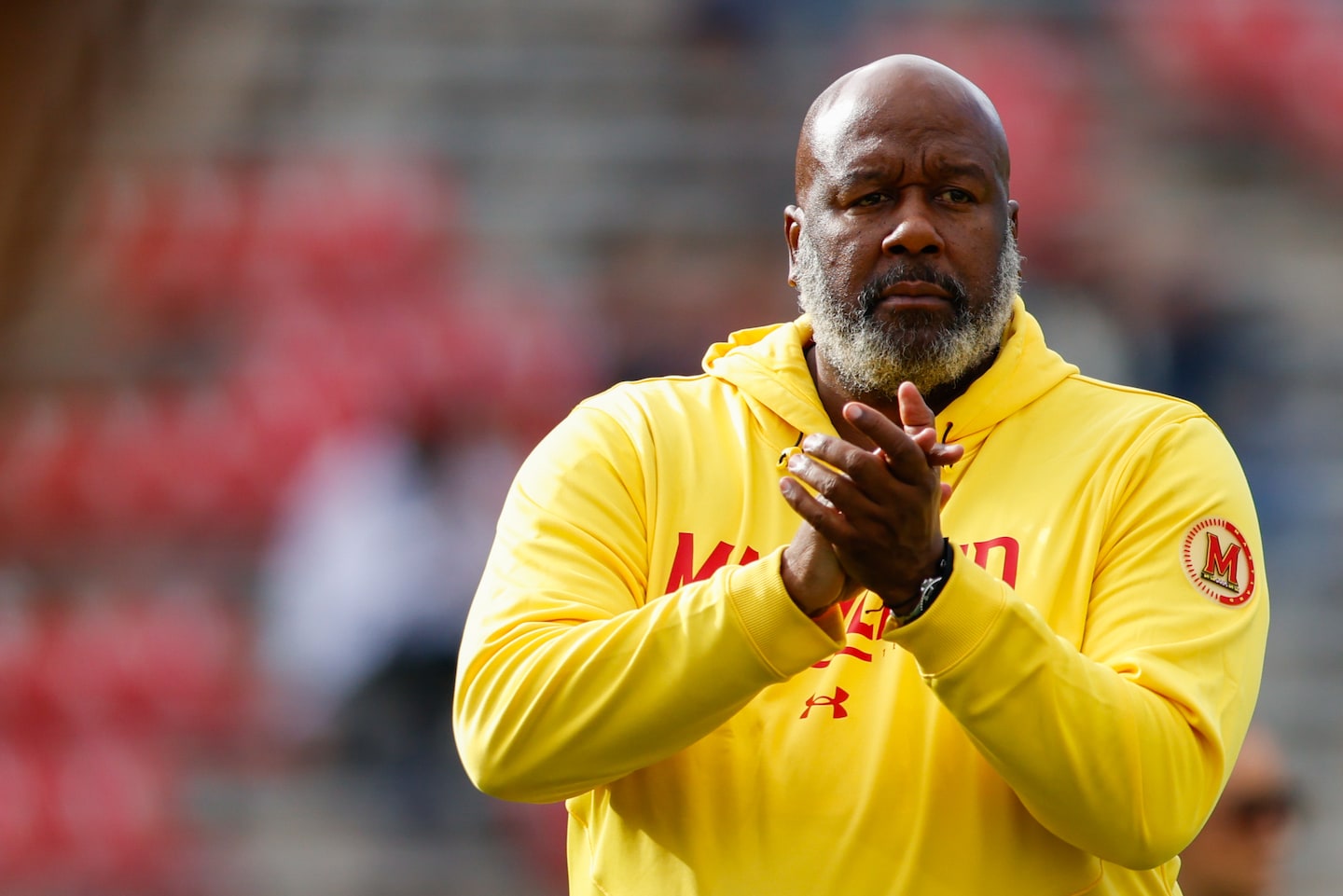Alabama, where Locksley was a record-setting offensive coordinator, reacted to Nick Saban’s surprise retirement Jan. 10 by hiring Washington’s Kalen DeBoer two days later. Washington then hired DeBoer’s replacement, Jedd Fisch, from Arizona, two days after that. And Arizona picked Brent Brennan from San José State to replace Fisch after another two days.
And after Jim Harbaugh decided Wednesday to leave Michigan to return to the NFL, where he will coach the Los Angeles Chargers, we began the wait for the Wolverines’ next coach. That wait ended Friday, with Michigan Athletic Director Warde Manuel, who happens to be Black, moving to promote Harbaugh’s offensive coordinator, Sherrone Moore.
Although Moore ran the sideline admirably while Harbaugh served suspensions from first the NCAA and later the Big Ten, his hiring won’t alter the pervasive inequity in college football head coach hiring.
At least the NFL has the oft-maligned, largely misunderstood Rooney Rule, which demands candidates of color get at least interviewed for head coach openings and other top positions. College football could use something similar even more — its own policy, or one imposed upon it. A simple reason: While Black athletes disproportionately predominate the sport, no one ostensibly in charge is doing the right thing when it comes to extending opportunities to aspiring head coaches who aren’t White.
The season that just ended began with 14 Black head coaches at 133 teams — 133! — in Division I’s top tier. Half were at the 69 — 69! — schools in the Power Five conferences, which are the ACC, Big Ten, Big 12, SEC and Pac-12.
Harbaugh’s departure made for the 28th college football coach opening this season. Five vacancies were filled by two Black men, two Hispanic men and a Pacific Islander.
The NFL just saw four coaches of color hired in one fell swoop after the regular season for the first time. With it, the league’s count of head coaches of color rose to a record nine. And two jobs, those with the Seattle Seahawks and Washington Commanders, remain unfilled.
“When you make a decision in three or four days, you gravitate toward what’s comfortable — what you’re used to — and that tends to cut against coaches of color, unfortunately,” texted Jeremi Duru, the American University law professor who wrote “Advancing the Ball: Race, Reformation, and the Quest for Equal Coaching Opportunity in the NFL” about the development of the Rooney Rule. “The NFL right now presents a stark contrast. It has historically struggled with diversity off the field as well. But in the past several years, club presidents of color have increased many fold and general managers of color have increased many fold. And in this hiring cycle, already four of six head coaching hires are of color.”
There is always an excuse, of course, for not doing the right thing. In the NFL, where there are still franchises that have never hired a non-White head coach, it’s because the candidate really wasn’t doing the play-calling. Or didn’t interview well. This time in the college ranks, it is the transfer portal. You have to fill a vacancy immediately or risk having recruits look elsewhere. Whatever.
This is why diversity efforts need to be legislated, and with penalty. It isn’t about diluting merit; it’s about finding more merit by expanding a pool.
Sam Sachs tried to get the NCAA to consider a Rooney Rule after he successfully got the state of Oregon to pass such legislation 15 years ago. Oregon State House Bill 3118, which became law in 2009, requires “public institutions of higher education to interview qualified minority candidate when hiring head coach or athletic director unless [institution is bound by contract to promote member of current coaching staff or] institution was unable to identify qualified minority candidate willing to interview for position.”
It worked. Over the years, Portland State, where Sachs played football, and Oregon have hired coaches of color and athletic directors of color. Oregon’s famous track team is in its 10th season coached by a Black man, Robert Johnson, who is as decorated a track coach as there is anywhere in the country.
And the West Coast Conference is the lone league with a Rooney Rule. It is the Russell Rule, named after Bill Russell, who played in the WCC at San Francisco. It requires its schools to “include a member of a traditionally underrepresented community in the pool of final candidates” for coaches and other high-level positions.
But the NCAA wanted no part of these acts. Sachs got his Oregon law to an NCAA committee in 2020 only to see it rejected.
“We had taken it as far as we could,” Sachs told me by phone Thursday. “The leadership seems really sporadic, and I don’t think there’s any interest in it.”
Other lawmakers in states across the country have tried to advance an Oregon-type bill. But Oregon remains the lone state demanding its college athletic departments be open-minded in hiring. And the door for aspiring head coaches of color remains barely ajar.
All of which means it is time for coaches of color to steal another page from the NFL: Brian Flores’s lawsuit. If they can’t get a Rooney-like rule, go to court.
Kevin B. Blackistone, ESPN panelist and professor of the practice at the Philip Merrill College of Journalism at the University of Maryland, writes sports commentary for The Post.


 Best Underground Water Leak Detection Equipment 2024
Best Underground Water Leak Detection Equipment 2024  Best Backyard Ideas: Turn Your Outdoor Area Into a Creative and Calm Haven
Best Backyard Ideas: Turn Your Outdoor Area Into a Creative and Calm Haven  Babar, Rizwan are good players but not whole team, says Mohammad Hafeez
Babar, Rizwan are good players but not whole team, says Mohammad Hafeez  Pak vs NZ: Green Shirts aim to bounce back against Kiwis today
Pak vs NZ: Green Shirts aim to bounce back against Kiwis today